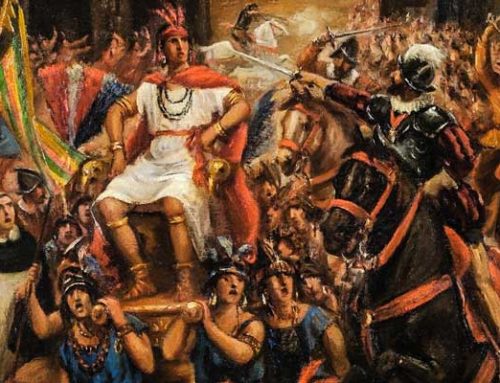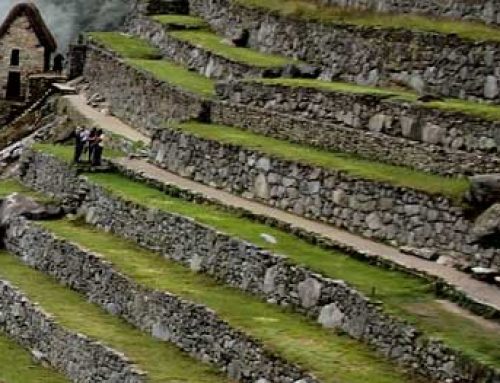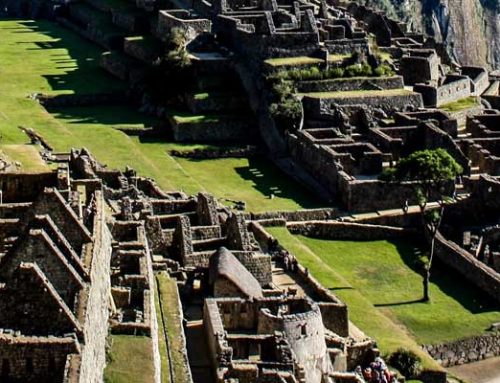When Christopher Columbus arrived in the Caribbean Sea in 1492, he thought he was in Asia. He called the people he encountered “Indios,” because he was convinced he had reached one of the islands of southeast Asia—land many Europeans called the Indies. Although Columbus likely died believing he reached Asia, we know today that he stumbled on what his fellow Europeans would eventually call a New World.
Through trade routes or war, the people of the Old World—Europe, Asia, and Africa—had been trading goods, ideas, and even diseases for thousands of years before the Colombian voyage. The Native Americans, however, developed their civilizations far from the influences of the Old World.
The oldest agreed-upon evidence of advanced civilization in the Americas comes from 13,500-year-old spear points near Clovis, New Mexico. By 10,000 years ago—long before the development of civilizations in Mesopotamia, Egypt, and China, humans occupied every section of North and South America, from modern Alaska to the Caribbean Islands and the southern tip of South America.
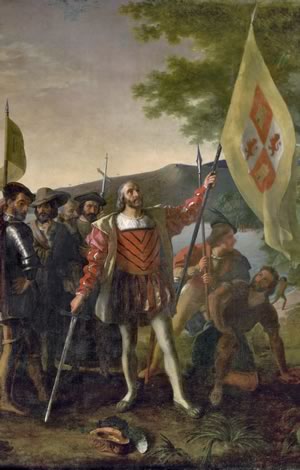
Landing_of_Columbus
Landing of Columbus by John Vanderlyn depicts Christopher Columbus and members of his crew, newly landed on a Caribbean island on October 12, 1492. The painting has been on permanent display in the Capitol Rotunda in Washington, D.C.
As people spread across the continents, they began to speak different languages and develop distinct cultural traditions. By 1492, the population of the New World was estimated to be between 50 and 75 million—though there is some evidence that as many as 100 million people lived in North America when Columbus arrived. The indigenous peoples of the Americas included about 350 major ethnic groups who spoke over 160 distinct languages.
Their societies ranged in complexity from simple to sophisticated. The Maya, Incas, and Aztecs developed a complex architecture that required great mathematical skill to build, though even today, the Yanomami people of Brazil and Venezuela live a lifestyle similar to that of nomads thousands of years ago.
It was a world without the wheel as a method of transportation. The most advanced cultures of the New World lived on mountainous land where the wheel would be of little value. The Native Americans knew about the wheel—wheels were occasionally used on children’s toys—but they did not value the wheel as a tool for adults.
Additionally, there were few animals in the New World large enough to drive a plow. The Native Americans hunted several large mammals to extinction thousands of years before the arrival of the Europeans. The remaining large mammal—the bear—could not be domesticated. The people who lived high in the Andes often used llamas to carry goods, but llamas are unpredictable and generally not strong enough to support the weight of an adult man.
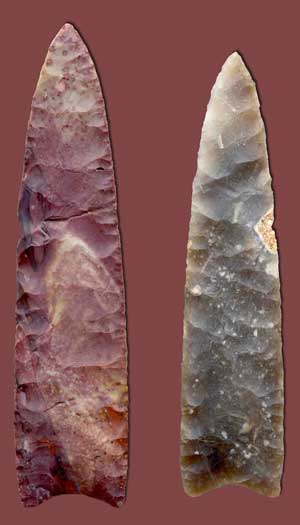
clovis_points
Arrowheads found near Clovis, New Mexico in 1929. They are part of the oldest agreed upon evidence of advanced civilization in the Americas. The arrowheads are more than 13,500 years old.
Additionally, there were few animals in the New World large enough to drive a plow. The Native Americans hunted several large mammals to extinction thousands of years before the arrival of the Europeans. The remaining large mammal—the bear—could not be domesticated. The people who lived high in the Andes often used llamas to carry goods, but llamas are unpredictable and generally not strong enough to support the weight of an adult man.
The people of the Old World often lived close to their domesticated animals—often sheltering the animals inside their homes. Smallpox, measles, influenza, and other diseases developed first in animals and eventually evolved into strains that were deadly to humans. The close contact with animals allowed the people of the Old World to develop some immunity to these diseases. While it was common for many people of the Old World to die of epidemics, the diseases would not often destroy entire populations.
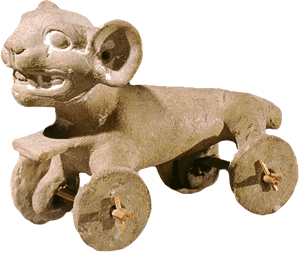
Pre-Colombian-toy
We have several examples of pre-Columbian wood carved toys mounted on wheels. North and South America lacked large land animals, so the people saw little need for the wheel as an adult tool.
The Native Americans, however, had not been exposed to these diseases. In 1492, the people of the Americas outnumbered Europe’s population, but within a generation, European diseases spread across the New World, killing an estimated 85 percent of the indigenous people.
The European’s greatest weapon in their quest to conquer America was disease, a weapon they did not know they had.
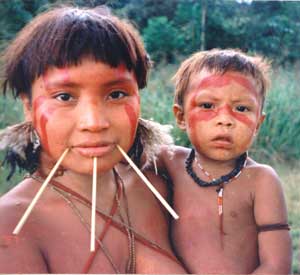
Yanomami
About 35,000 Yanomami live in the Amazon rainforest on the border between Venezuela and Brazil.
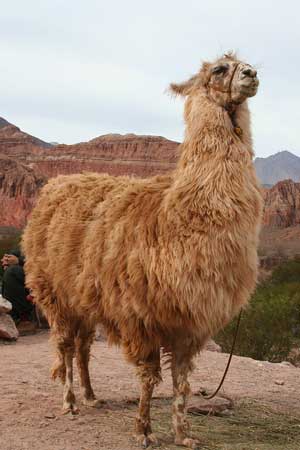
Llama
The South American llama is genetically related to the camels of the Middle East and North Africa. They have been used as a meat and pack animal for hundreds of years.


